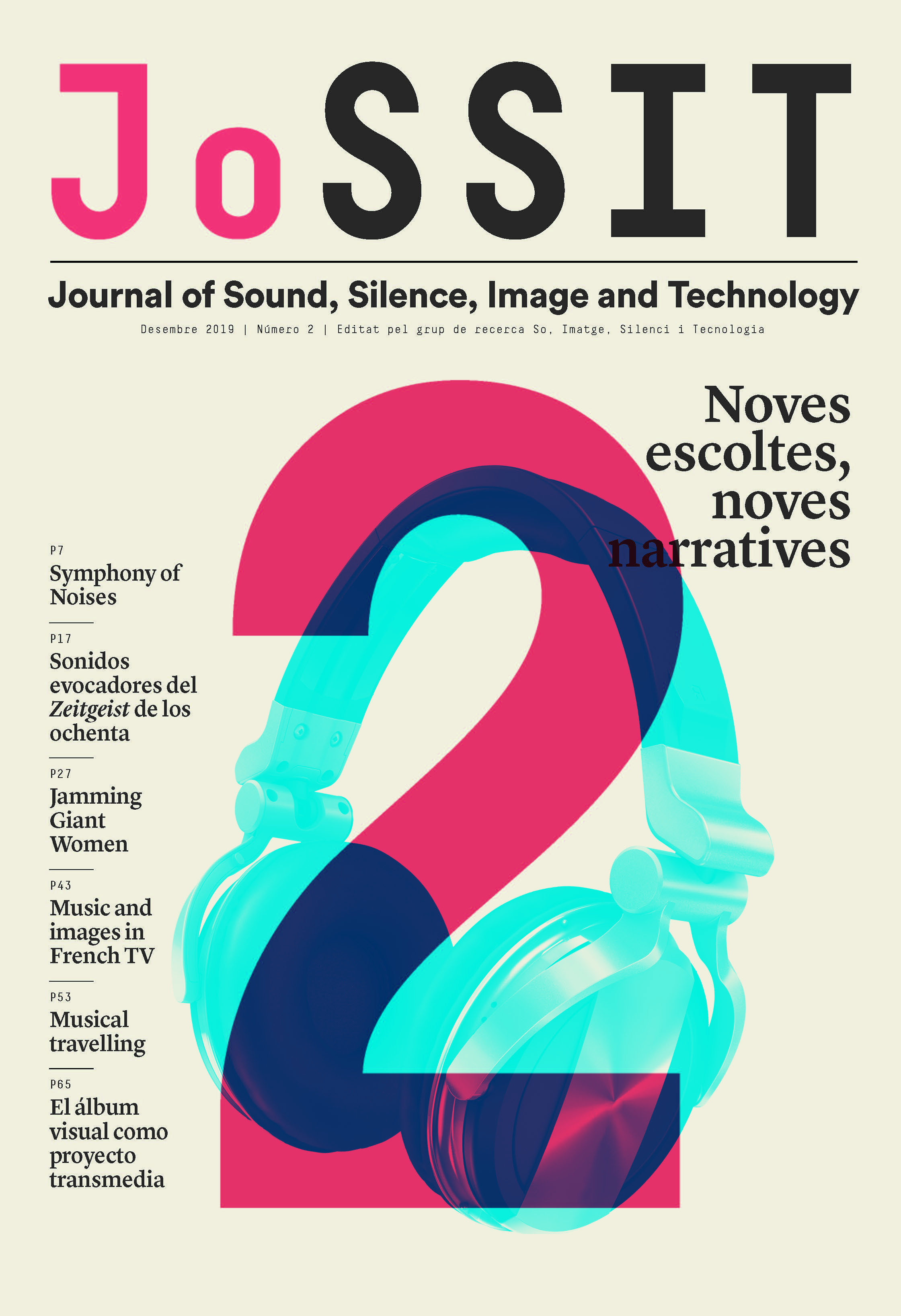No. 2 (2019): New listenings, new narratives

The Number 2 of the Journal of Sound, Silence, Image and Technology (JoSSIT) focuses on new ways of listening and new narratives arising from technological mediation, both in terms of music use and reception as the new ways to approach his analysis from the academy. Starting from this perspective, the present collects offers a view from which the theory of sound and music in the audiovisual comes into contact with the emerging theories about sound discourse and pop production, while connecting the notions of listening technologically mediated with thesis and analytical models of ethnomusicology.
To "Symphony of Noises: Revisiting Oskar Sala s' Geräuschmontage 'for Alfred Hitchcock's 'The Birds' (1963)", Julin Lee presents an interesting analysis around this unconventional soundtrack and makes use of a theoretical apparatus where sound studies and theories about the role of sound and cinematographic music are mixed with concepts about synthesizer organology and with the use of sonograms.
Silvia Segura, on the other hand, presents us with a reflection on the nostalgia and pop sound of the eighties in an interesting article from which she gathers the most recent theories about the sound discourse of popular music and the tools of sound production. With the title "Nostalgia ON: Evocative Sounds of the 'Zeitgeist' of the Eighties", the author develops a theoretical framework that begins with the reflection on the sound composition of pop, going through considerations on technological mediation and finally placing itself in the construction environment of the 'retro sound'.
"Jamming Giant Women: Narration through Song in Steven Universe" by Andrea Meseguer and Margarita Fernández de Sevilla, analyzes the different roles that songs play in the narrative development of Steven Universe, a cartoon television series created by Rebecca Sugar.
Guylaine Gueraud-Pinet focuses on the integration of pre-existing music into non-fiction programs on French television. His article presents an informative and communicative approach and a crossed perspective between socioeconomic economics and semiotic to reflect on the relationships between music and television media.
A "Musical traveling: Listening to music mediated by public transport" Marco Mariner proposes a fusion of perspectives between ethnomusicology and sound studies from which to address the issue of the symbolic generation of private spaces to public transport through listening devices individualized
Finally, Ana Sedeño reflects on a media modality of recent consolidation in the network: the visual album, analyzing it as a resource that allows artists and bands to create open concepts and lax narratives, in what she defines as parafonographies, meta-narratives and storyworlds around which artists show us their artistic proposals.
It is, therefore, a number with a certain multidisciplinary orientation that responds to an imperative need of our academic present: solidify ties between perspectives, approaches and methodologies that - from different fields - are absolutely complementary to these new approaches to the fact musical in the vast audiovisual landscape.
We hope you enjoy it,
The Editorial Team




